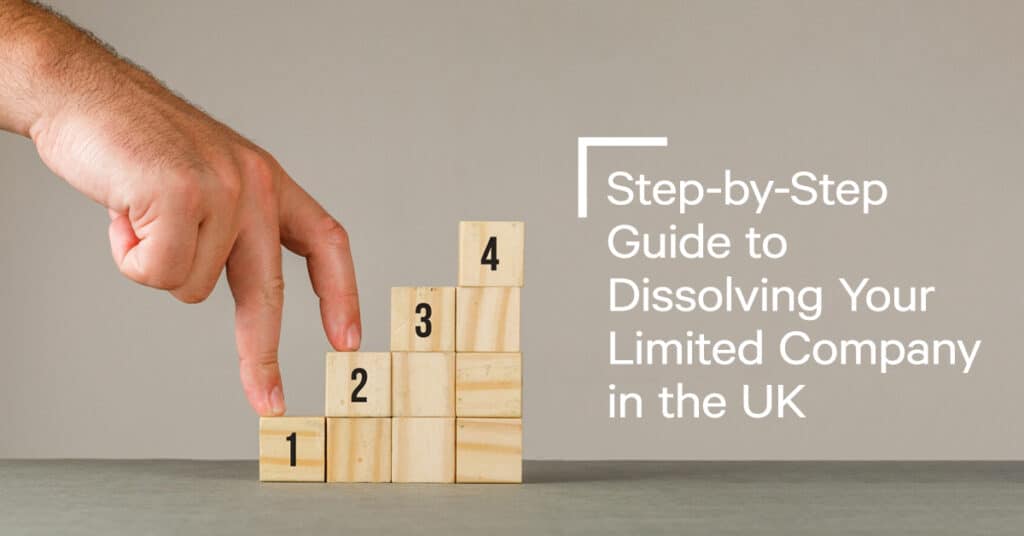Thinking of dissolving your limited company? Maybe the business isn’t quite cutting the mustard anymore, or you’re just ready to call it a day. Whatever your reason, you’ll need to go through the proper steps to shut up shop officially. At Simple Liquidation, we’ve helped hundreds of directors navigate this minefield, from solvent closures to sticky insolvent situations. We’re not some middleman flogging leads, we’re the real deal. Our licensed insolvency practitioners roll up their sleeves and get stuck in to help you sort it from A to Zed.
So, let’s crack on. Here’s your no-nonsense, step-by-step guide to dissolving your limited company in the UK.
Step 1: Decide if You’re Solvent or Insolvent
Before anything else, you’ll need to figure out your company’s financial position. Is the business:
- Solvent – Can it pay off its debts in full?
- Insolvent – Finding it difficult to keep up with bills, or feeling overwhelmed by HMRC correspondence?
If your company’s solvent, you might be able to go down the Members’ Voluntary Liquidation (MVL) route. If insolvent, it’s more likely you’ll need a Creditors’ Voluntary Liquidation (CVL). Don’t worry, we’ll explain both. At Simple Liquidation, we handle both routes, so whether you’re bowing out on top or buried under paperwork, we’ve got your back.
Step 2: Members’ Voluntary Liquidation (MVL) – For Solvent Companies
If you’re solvent and looking for a tax-efficient way to close up shop, MVL is your best mate. It’s tidy, quick, and helps you get the most out of your final distributions.
The process looks like this:
- Board Resolution:
You and the directors hold a meeting and agree it’s time to call it quits.
- Declaration of Solvency:
You’ll need to sign a statutory declaration swearing the company can pay its debts plus a bit of interest, within 12 months. Lying here? Big no-no. It’s a criminal offence.
- Appointment of a Liquidator:
That’s where we come in. Our licensed insolvency pros, like Jamie Playford and Alex Dunton, step in and take control. We make sure everything’s done by the book.
- Distributions and Closure:
After selling off any remaining assets and paying creditors (if needed), we’ll sort your final accounts and close the company for good.
MVL Perk: You may qualify for Business Asset Disposal Relief (formerly Entrepreneurs’ Relief) and only pay 10% Capital Gains Tax on what you receive. Not too shabby, eh?
Step 3: Creditors’ Voluntary Liquidation (CVL) – For Insolvent Companies
Now, if you’re insolvent and can’t pay your suppliers, HMRC’s breathing down your neck, it’s time to stop trading and protect yourself legally. This is where CVL comes in.
Here’s how it pans out:
- Stop Trading Immediately:
Continuing to trade while insolvent could land you in hot water. Step away and speak to a professional ASAP.
- Speak to Simple Liquidation:
We’ll have a relaxed, no-obligation conversation—completely judgment-free. - Directors’ Meeting & Resolutions:
You’ll formally agree to the company’s insolvency and propose a CVL. We’ll draft the necessary documents.
- Creditors’ Meeting (virtually these days):
While creditors have a voice in the process, their role is primarily procedural. Once appointed as liquidators, we take over and manage the process from there.
- We Deal With the Fallout:
We’ll communicate with creditors, deal with the paperwork, handle redundancies, and make sure everything is done properly. You can breathe again.
CVL Benefit: Avoids court proceedings and legal action. You’re doing things the right way and protecting yourself from potential director’s disqualification.
Step 4: Striking Off (If Applicable)
If your company has no debts, no assets, and hasn’t traded for a while, you might be able to close it via voluntary strike off (using a DS01 form). It’s a DIY route, but be warned:
Be careful – If you owe money or HMRC thinks something’s fishy, they’ll object. Also, it doesn’t remove personal liability if you’ve done things dodgy.
That’s why many directors choose to play it safe with MVL or CVL, especially when time, tax, or legal risks are involved.
Why Choose Simple Liquidation?
We’re not a faceless call centre located miles away. We’re a dedicated, hands-on team of experienced insolvency practitioners based here in the UK. When you get in touch, you’ll speak directly with professionals who’ve guided hundreds of directors through the process—people who truly understand what you’re going through.
Our creds:
- Licensed by the Insolvency Practitioners Association and ICAEW
- Members of R3 (Association of Business Recovery Professionals)
- Over 30 years of collective experience
- No fluff, just professional, confidential advice
We get money’s tight. Especially if you’re facing insolvency. That’s why we offer cost-effective solutions without cutting corners.
FAQs (We Get These a Lot)
How long does liquidation take?
It varies, but MVLs can wrap up within 3-6 months. CVLs can take a bit longer depending on asset sales and creditor claims.
Can I start a new company after liquidation?
Yes, but with rules. You’ll need to be careful with naming and directors’ duties. We’ll guide you on that.
What happens to the staff?
We’ll manage redundancies properly, and they may be able to claim from the Redundancy Payments Service.
Will I be personally liable for debts?
Usually no, unless you’ve given personal guarantees or traded wrongfully. That’s why timing matters.
Final Thoughts: Don’t Go It Alone
Shutting down your limited company is a big step whether it’s the end of a dream or just a tidy-up job. Doing it wrong can haunt you for years, especially if HMRC or creditors come knocking.
At Simple Liquidation, we make sure it’s done properly and painlessly. We speak plain English, and we’re happy to have a no-obligation natter to help you weigh your options.
Give us a call, drop us a message, or request a callback. No pressure, just helpful advice.

